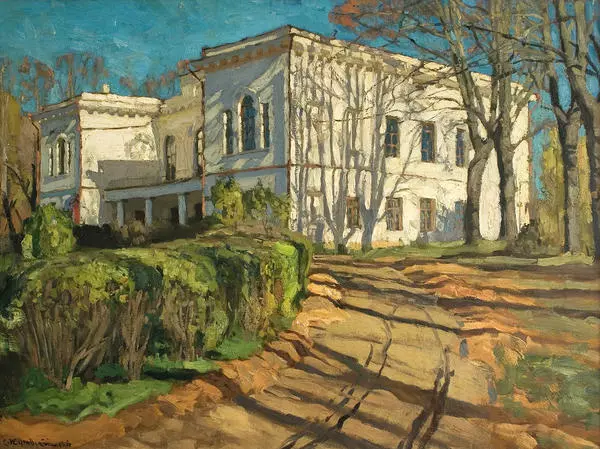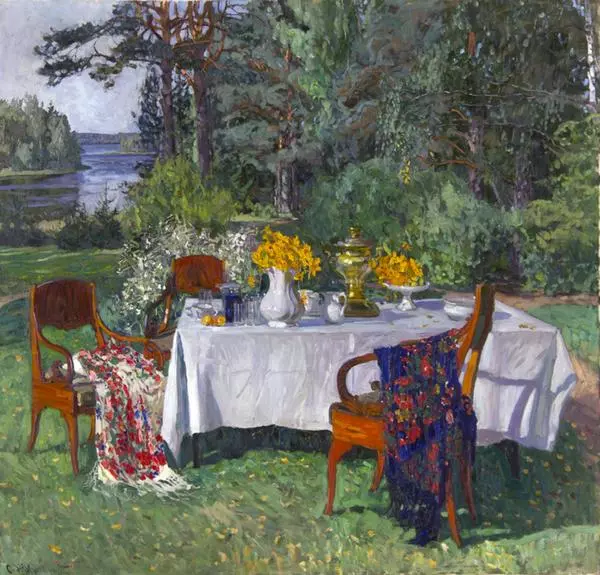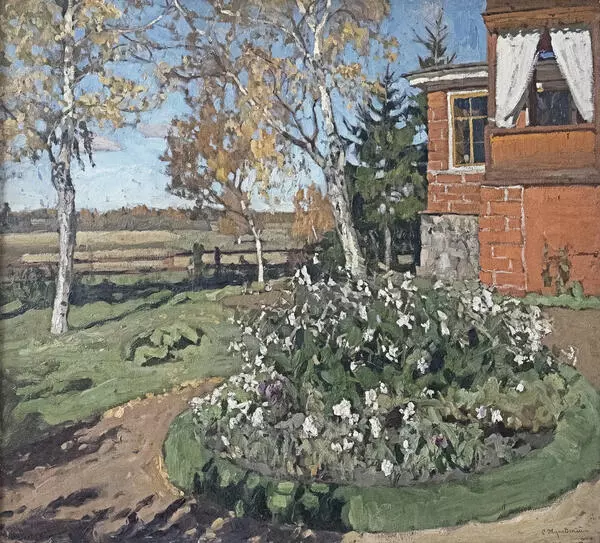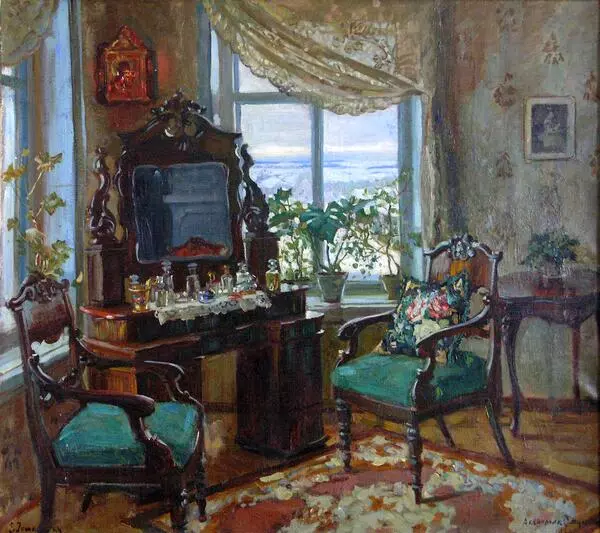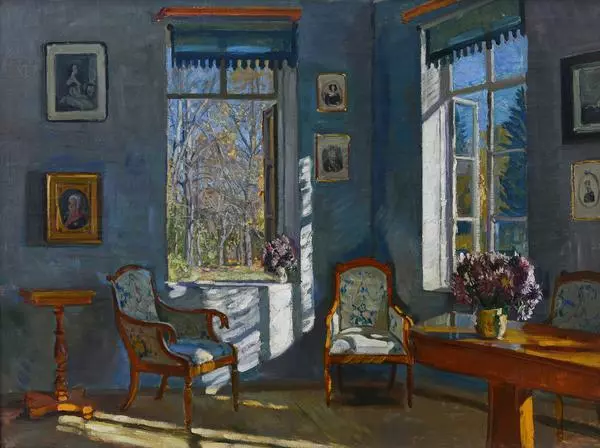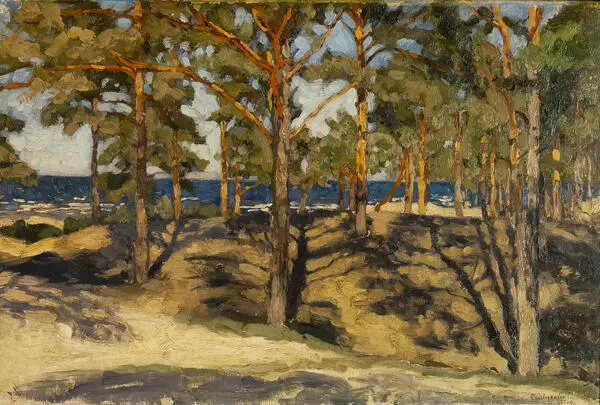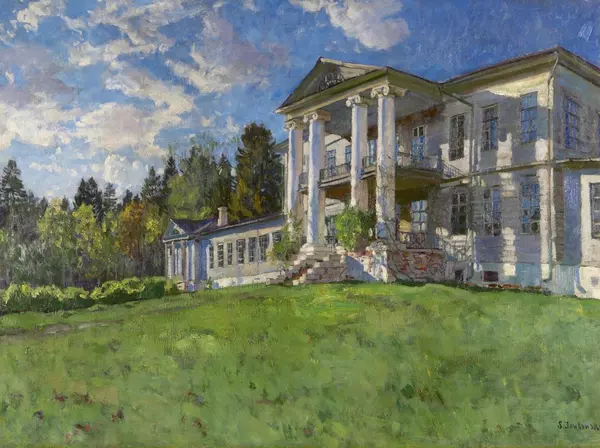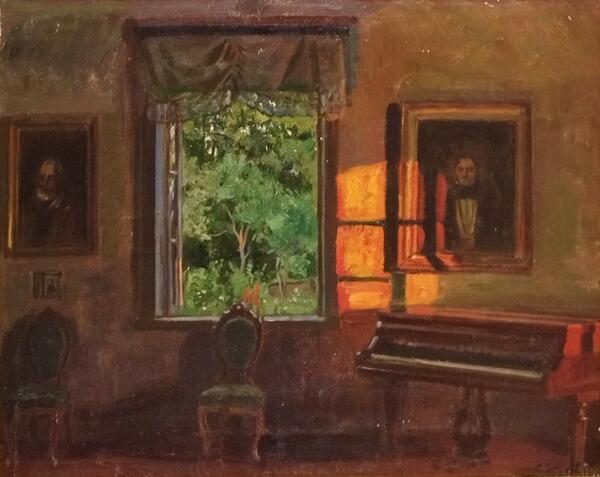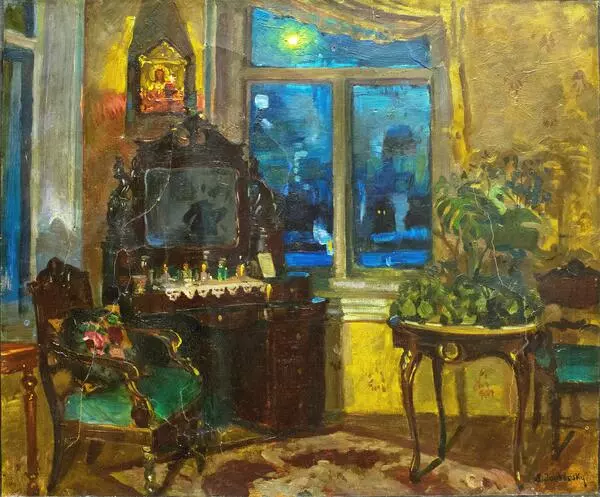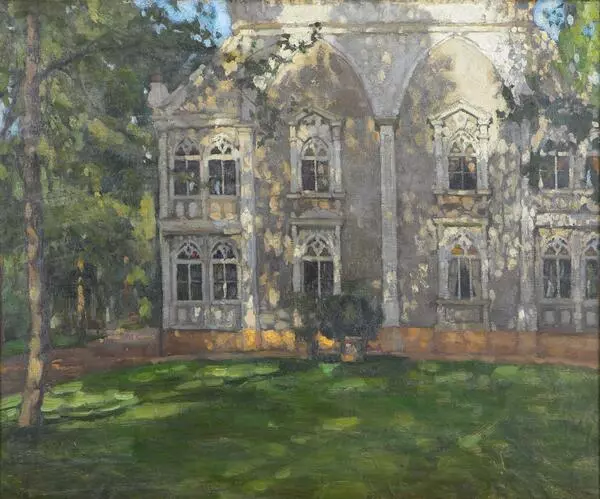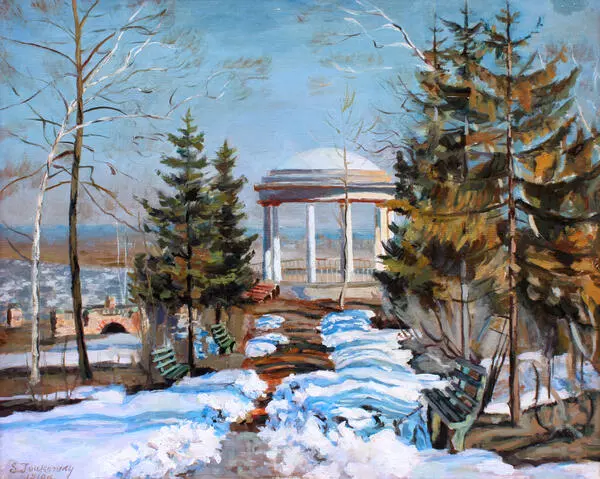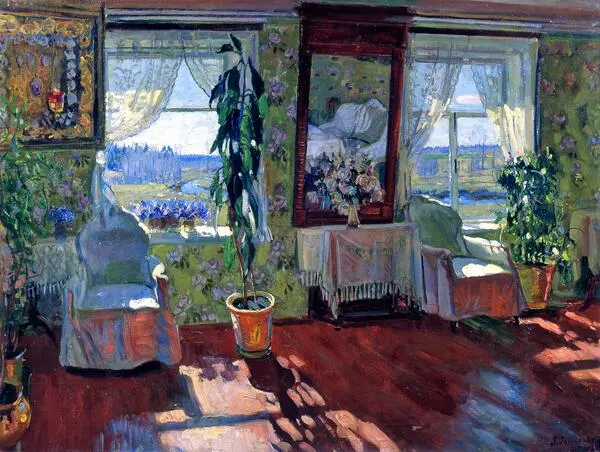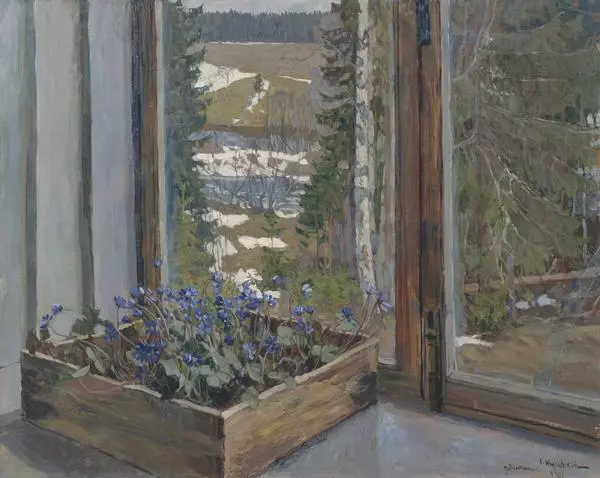The painting exhibited in the collection of the Tyumen Museum and Educational Society is a work of Stanislav Zhukovsky. Zhukovsky is a graduate of Moscow School of Art. Vasily Polenov and Isaac Levitan influenced him greatly. The artist succeeded in combining the traditions of realistic plein air, methods of impressionism and modern style. His paintings are characterized by bright, but at the same time a little bit reserved, expressive palette.
A princely house in autumn is depicted in Zhukovsky painting. In front of the house there is an autumn garden with withering foliage. Zhukovsky depicted an old Milyukov estate in Vsesvyatskii village of Tver province, where he lived and worked for a long time. This work is an example of late Russian impressionism. Here subtle gradations and large impressive brush strokes are combined. The artist used warm shades for the foliage and grass in the garden and cold colours for the depiction of the sky and tree branches. Art researches point out that Zhukovsky estate motives, which are often represented against autumn dying nature, are connected with nostalgic longing for bygone epoch, lost poetry of old ‘nests of the gentry’. Deserted ‘nest of the gentry’ became a mute witness and a symbol of the passing era. The old house and transparent trees seem almost alive, spiritual creatures, which have their own destiny. The artist filled his landscape with elegiacal mood and at the same time made it lively and dynamic with temperamental paintbrush. Rich, brisk brush strokes in the depiction of varicoloured foliage rise the feeling of thrill, mobility of living matter. ‘The red’ of the foliage gains even a greater decorative sonority against the white walls of the house with a great number of patches of reflected light and reflections. The artist just partly used the achievements of French impressionists, without crossing a line where the form ‘dissolves’. He combined impressionistic vision with Levitan understanding of the substance of a landscape motif.
A princely house in autumn is depicted in Zhukovsky painting. In front of the house there is an autumn garden with withering foliage. Zhukovsky depicted an old Milyukov estate in Vsesvyatskii village of Tver province, where he lived and worked for a long time. This work is an example of late Russian impressionism. Here subtle gradations and large impressive brush strokes are combined. The artist used warm shades for the foliage and grass in the garden and cold colours for the depiction of the sky and tree branches. Art researches point out that Zhukovsky estate motives, which are often represented against autumn dying nature, are connected with nostalgic longing for bygone epoch, lost poetry of old ‘nests of the gentry’. Deserted ‘nest of the gentry’ became a mute witness and a symbol of the passing era. The old house and transparent trees seem almost alive, spiritual creatures, which have their own destiny. The artist filled his landscape with elegiacal mood and at the same time made it lively and dynamic with temperamental paintbrush. Rich, brisk brush strokes in the depiction of varicoloured foliage rise the feeling of thrill, mobility of living matter. ‘The red’ of the foliage gains even a greater decorative sonority against the white walls of the house with a great number of patches of reflected light and reflections. The artist just partly used the achievements of French impressionists, without crossing a line where the form ‘dissolves’. He combined impressionistic vision with Levitan understanding of the substance of a landscape motif.
For the first time Stanislav Zhukovsky presented this painting for public in 1909-1910 at the exhibition of Artist’s Union of Russia. This painting continued an “estate” theme so deeply loved by the artist.




